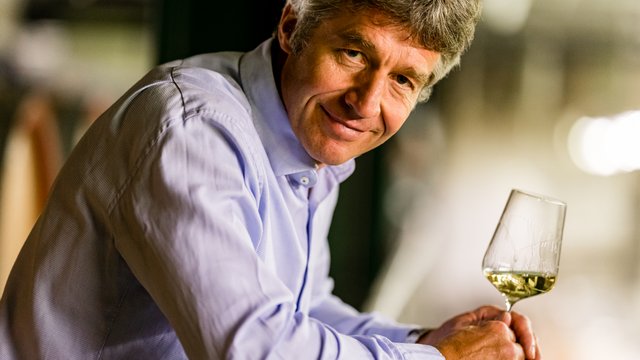Herrnberg
Total area: 32.5 hectares
Weingut Künstler: 5.0 hectares
Vineyard
The "Herrnberg" name is of clerical origin, as the site was first owned by the canons of Cologne and later (post-1273) by the Archdiocese of Mainz. While limestone is not a common substrate in Hochheim's vineyards, one field in the eastern section of the town offers an exception. Located close to the Stein vineyard, it almost looks as if a giant suddenly decided to empty a backpack filled with chunks of yellow limestone by scattering them evenly about the land. Year for year, the wines from this site all share the common thread of that marked minerality. Little surprise, as the Herrnberg features the most carbonate-rich soil in the entire Rheingau.
Wine: Minerality and Nuance
Two different soils shape the character of Herrnberg Rieslings: a light and sandy loess soil and an ancient limestone. Together they create stunning, spirited wines of fruit and spice laced with a finely woven acidity. While the wines drink beautifully in their youth, they also demonstrate tremendous aging potential and cellarability.
Soil
This spot once served as a quarry, but the subsoil has since been filled in with limestone debris. The orange-hued weathered earth sits between layers of limestone and is rich in clay. The sandy loess above provides fertile humus and calcareous clay to this reclaimed agricultural land. A layer of limestone debris protects the sandy loess against erosion. At some point the soil was covered by a deep layer of compost and humus. Because the dark and well-aerated earth heats quickly in the sun, this newest layer helps promote the site’s unusual microclimate. Moreover, limestone chunks on the surface of the soil absorb warmth during daytime, returning it to the vines during the night.

